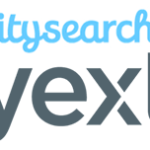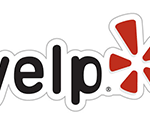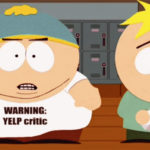Social media has been at the forefront of digital marketing for quite some time, and it’s unlikely this will change in the near future.
In fact, we are still seeing new social media channels and platforms emerge – alongside a wide variety of content types, features, and formats.
1. Short-Form Video
If you’ve spent any time on social media in the past few years, you know that short-form video has become one of the most common – and popular – types of social content.
Short-form video could be defined as any piece of video content that is under 10 minutes long, but typically, the shorter, the better. When I think of short-form video, I think of video content around 0-3 minutes long.
From Reels to TikTok to YouTube Shorts, short-form video has proven to be an incredibly effective format for reaching audiences on social media.
The Best Social Media Channels For Short-Form Video
Given the demand for short-form video, it works well across most social media platforms, from TikTok to LinkedIn. However, the following stand out as the best fit:
- TikTok – This one should be obvious. As the most popular social media platform worldwide, TikTok is the leader in short-form video.
- Instagram – With the introduction of Instagram Reels in 2020, the platform has leaned into short-form videos. If you create short videos on Instagram, the algorithm will likely reward you.
- YouTube – While YouTube is better known for long-form videos, which we’ll dive into below, the platform has also been branching into short-form videos. It launched YouTube Shorts in 2020, which now has over 1.5 billion monthly users.
- Snapchat – The pioneer of the ephemeral video story, Snapchat has somewhat faded into the background in terms of social media chatter. But don’t be fooled;
2. Long-Form Video
Long-form video is video content that is 10 minutes long or longer.
And while you may not see as much of it in your day-to-day social media activities, it definitely plays an important role in brand marketing.
Long-form video can be a powerful tool for more in-depth brand storytelling and content.
3. User-Generated Content (UGC)
User-generated content, or UGC, is content created by individuals unaffiliated with your brand about your brand – and it’s perfect proof of what makes social media content so powerful.
Over the past decade or so, UGC has become one of the most pervasive types of brand content on social media, and for good reason.
UGC leverages word-of-mouth marketing to build trust and community with your target audience. This is because people are more likely to trust a recommendation from their peers than believe in marketing directly from a brand.
UGC can come in many forms, from image or carousel posts to short videos, Instagram Stories, etc.
4. Live Streams
Live streaming has been on the rise in recent years, and brands are increasingly getting involved.
It’s become so popular that platforms like Instagram, YouTube, and even TikTok now have dedicated live video products.
Beyond this, new platforms built entirely around live streaming have popped up to cater to fans of this content format.
For brands, live streams provide an opportunity to engage in real-time with your community and offer a more authentic, “behind the scenes” look at your brand than produced content can.
5. Polls & Questions
The best kind of social media content engages your audience and encourages them to interact with you.
Enter: audience polls and questions.
Whether you’re using a poll feature in a specific social platform, or asking an open-ended question, posing questions to your audience can be a simple way to drive engagement and collect helpful data.
6. Influencer Collaborations
By now, I’d guess there’s a decent chance that when you hear the words “social media,” you think of influencers.
Influencers really have “taken over” social media by building loyal communities that look to them for entertainment and inspiration, as well as recommendations and advice.
Partnering with influencers can boost your brand’s reach and give it exposure in front of an engaged audience.
Influencer collaborations can take many forms, but the key to doing it right is to find an authentic and natural connection between the influencer and your brand.
7. Infographics And Charts
The best social media content can tell a story using only visuals.
Infographics and charts are great examples of this, which is perhaps why they have become a go-to content type for both individuals and brands alike.
These images allow you to synthesize information in a way that’s optimized for social audiences (meaning it’s digestible and clear).
8. Memes
What would social media be if not for memes?
These entertaining and relatable images, videos, and text catchphrases that iterate on a trending idea or topic are the “bread and butter” of social media content.
While brands should be mindful of which memes they use (ask yourself if you have something to add to the conversation), when leveraged correctly, memes can achieve a home-run marketing moment for you.
9. GIFs
Graphics Interchange Format, more commonly known as GIFs, are small, soundless video or animation clips that are popular with social media users.
GIFs are typically used to represent how one feels or depict a particular situation and are often shared as a reaction to a piece of social content.
For brands, GIFs can be a fun and relatable tool when speaking directly to members of your social community.
10. Webinars & Events
Connecting with your audience on social media is all about providing them with valuable content. And what’s more valuable than an educational webinar or virtual event?
These types of content allow you to engage on a deeper level with your audience and reach a global user base.
While webinars are typically presentations that go deep on a specific topic – and often feature key speakers from external organizations – other events can cover anything from a digital conference to a workshop.
The Best Social Media Channels For Webinars & Events
LinkedIn is the best platform for promoting and hosting your webinars and events.
Aside from offering all the functionality you need, it also has an audience that is more likely to be looking for educational and professional content.
Facebook and YouTube are also helpful platforms for hosting live video events.
Brand Example: Webinars & Events
Bizzabo is a brand that comes to mind when I think of webinars.
It often promotes and hosts informative virtual events for its followers on LinkedIn – which makes perfect sense, given that Bizzabo is an events company.
11. Contests And Giveaways
If you’re looking to get your followers excited and engaged, consider trying a contest or giveaway on social media.
This involves offering a special prize – whether that be a free product, money, or a trip – in exchange for specific interactions from your users (e.g., comment below, tag a friend, follow this account, like and share this post, etc.)
The Best Social Media Channels For Contests & Giveaways
Instagram is probably the most commonly used social channel for contests and giveaways.
However, you can also run them on Twitter, Facebook, Pinterest, and even TikTok.






